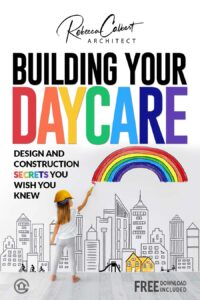Have you ever wondered how often you should be cleaning and disinfecting the playground equipment in your childcare facility? It’s one of those tasks that might seem straightforward but often leaves us questioning the best practices, frequency, and tools to use. Keeping a clean and safe environment for children is a top priority for any childcare business owner, and playground equipment is no exception. They offer endless joy and developmental benefits, but with that come the inevitable germs and dirt.
Understanding the Importance of Clean Playground Equipment
Before diving into the nitty-gritty of cleaning, let’s talk about why it’s so crucial. Kids are amazing and resilient, but they’re also quite the explorers. Playground equipment naturally invites them to touch, climb, and interact with their environment, which means germs can quickly spread. Ensuring that the playground is clean reduces the risk of illness and creates a safer space for children to play.
Moreover, parents take note of your facility’s cleanliness, and having well-maintained equipment can be a significant factor in their decision-making process.
Health and Safety Concerns
Playgrounds should be places of joy, not hotspots for germs and potential illnesses. Younger children, particularly those in childcare centers, are more susceptible to infections. Germs from playground surfaces, if not addressed regularly, can lead to health issues ranging from minor colds to more severe illnesses. Remember, cleaning is not just about aesthetics; it’s fundamentally about health and safety.
Enhancing Longevity
Quality playground equipment represents a substantial investment for your childcare business. Regular cleaning and maintenance not only ensure safety and hygiene but also enhance the equipment’s longevity. By taking the time to maintain it properly, you protect your investment and ensure it doesn’t wear out prematurely.
Key Considerations Before You Start
Before you roll up your sleeves and get down to cleaning, there are a few important factors to consider.
Assessing the Playground Material
Playground equipment comes in various materials – plastic, metal, rubber, and wood are common. Each material has specific cleaning requirements. For example, metal might be prone to rust if cleaned with too much water, while wood could absorb moisture and become damaged. Knowing your materials helps you tailor your cleaning process.
Weather and Environmental Factors
Consider the climate and local weather conditions. Humidity levels and temperature can impact how and when you should clean. For example, on a warm sunny day, cleaning solutions might dry faster, while rainy weather may require you to adjust your schedule to ensure thorough cleaning without the rain interfering.
Cleaning vs. Disinfecting: What’s the Difference?
It’s crucial to differentiate between cleaning and disinfecting, as each plays an essential role in maintaining playground cleanliness.
Cleaning: The First Step
Cleaning involves removing dirt, dust, and debris from surfaces. It doesn’t necessarily kill germs, but it does reduce their numbers and lowers the risk of spreading infection. Think of it as the preliminary step that sets the stage for effective disinfection.
Disinfecting: The Next Level
Disinfecting goes a step further by using chemicals to kill germs on surfaces. It’s essential to first clean the surfaces so that the disinfectant can work effectively. This two-step process is the best way to ensure a hygienic playground.
Effective Tips for Cleaning Childcare Playground Equipment
With a clear understanding of the importance and processes, here are some actionable tips to help you keep your playground equipment spotless and safe.
Create a Cleaning Schedule
Establishing a regular cleaning schedule is vital. Depending on usage, consider cleaning more frequently during peak usage times, such as in the summer months. A consistent schedule helps ensure that cleaning isn’t neglected and that all equipment is regularly maintained.
Prioritize Accessible and High-Touch Areas
Focus on areas that children touch frequently, like handrails, slides, and swings. These high-touch zones are more likely to harbor germs and require more frequent cleaning and disinfecting.
Use Suitable Cleaning Agents
Choose cleaners and disinfectants that are effective but safe for children. Make sure they are non-toxic and appropriate for the materials you’re working with. Always follow the manufacturer’s instructions to avoid damage and ensure effectiveness.
Implement a Rinse and Dry Method
After applying cleaning agents, thoroughly rinse the surfaces to remove chemical residues. Rinsing can be as essential as cleaning itself, especially on equipment that children will touch. After rinsing, ensure the equipment is dry to prevent slips and prolonged exposure to chemicals.
Consider Eco-Friendly Options
Modern cleaning supplies offer environmentally friendly options that are effective and reduce chemical exposure. These can be particularly beneficial in childcare settings as they minimize children’s contact with harsh chemicals.
Key Tools and Supplies You Need
Identifying and gathering the right tools and supplies is crucial for an efficient cleaning process.
| Tool/Supply | Purpose |
|---|---|
| Soft Bristle Brush | To scrub surfaces without scratching them. |
| Hose or Pressure Washer | For rinsing off soap and other residues effectively. |
| Non-Toxic Cleaner | For removing debris and dirt. |
| Disinfectant | To kill germs post-cleaning. |
| Cloths or Towels | For wiping and drying surfaces to prevent slips. |
Maintaining the Environment
In addition to the equipment itself, maintaining the surrounding environment is critical.
Regularly Check for Hazards
Regular inspections for hazards like loose bolts, sharp edges, and broken parts can prevent injuries. During cleaning sessions, check for such issues and address them promptly.
Manage Landscaping
Keeping grass, trees, and bushes trimmed can prevent debris from accumulating on playground equipment. It also reduces the hiding spots for pests and other potential hazards.
Training Your Staff
A well-trained team is essential to maintaining playground cleanliness.
Conduct Staff Training Sessions
Regular training sessions can educate your staff on the best practices for cleaning and disinfecting. This ensures everyone knows what to do and does their part effectively.
Encourage Staff Suggestions
Those who interact with the equipment regularly might have valuable insights or notice areas that need attention. Encouraging staff to provide feedback can improve your cleaning processes.
Keeping Up With Industry Standards
Staying informed about industry standards and guidelines can help ensure your facility is always following best practices.
Follow Local Guidelines
Ensure you’re up to date with health regulations and guidelines relevant to your region. This might include requirements for specific cleaning agents or methods.
Join Industry Associations
Becoming a member of childcare or playground industry associations can provide resources and updates on the latest best practices.
Evaluating and Improving Your Process
Constant evaluation and improvement are part and parcel of an effective cleaning routine.
Gather Feedback
Collect outside input from parents, staff, and even children, if appropriate, regarding the cleanliness of the playground. Their feedback can highlight areas you might have missed.
Periodic Reviews
Set a timeline for reviewing your cleaning processes and schedules. Determining what works and what doesn’t can help you refine your procedures.
Conclusion
Ensuring that your childcare playground equipment is clean and safe requires a strategic approach. It’s not just about applying cleaning products; it’s about understanding the materials, selecting the right products, following a schedule, and regularly evaluating your process. By following these tips, you can maintain a playground that is safe, inviting, and a testament to the quality of care you provide.
Remember, the ultimate goal is to create a safe and hygienic environment where children can play and learn without the risk of falling sick. Once the process becomes a regular part of your routine, you’ll likely notice not just an improvement in safety, but also a boost in the overall satisfaction of both parents and children.

